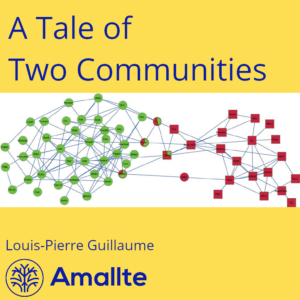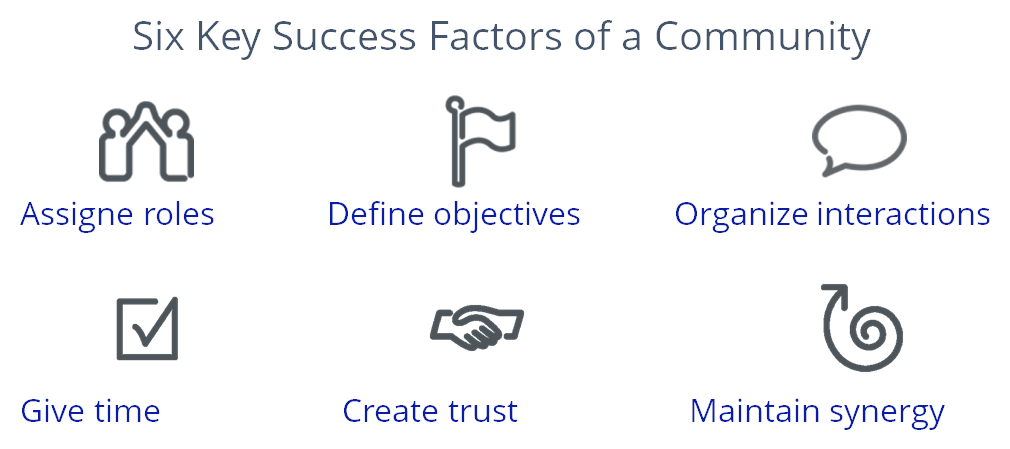A community without a sponsor is dead!
Louis-Pierre Guillaume, 10 mars 2019
1. Why communities do not succeed in companies
Frank, who is in charge of purchasing, had a good start. As soon as he saw the announcement of the opening of an enterprise social network in his company, he opened the Purchasing Community, following the instructions provided by IT. Thinking of doing the right thing, he asked his PA to invite all the members of his extended team, about 100 people around the world. With the help of internal communication, he published his first message encouraging members of the Purchasing community to collaborate and exchange best practices. Alas, the only exchanges were documents posted by a few members and announcements about Frank’s monthly audio conferences. Disappointed, Frank announces to his peers in the ExCom that communities are useless.

Helen is a quality engineer. A fan of LinkedIn and Facebook, she is a member of communities linked to her tastes and passions. As soon as the announcement of the opening of her company’s social network was made, she jumped at the opportunity and created a Quality Community. She talks to her colleagues in quality engineering like her, and in a few weeks, about fifty people registered. Exchanges are taking place. She is organizing a web conference that attracts about 20 participants. The community is full of informal exchanges.
One of the discussions deals with a customer problem due to a defect; members discuss how best to respond to the customer and prevent it from happening next time. But the sales manager is aware of the discussion and joins the discussion forum. He is not happy and posts a blunt message that his team is in charge of customer relations and that Quality must be in charge of what concerns them. Helen receives a small unpleasant comment from her boss, contacted by the sales manager, about her time spent in this community. No one in the management of the company comes to the defence of the community; it is abruptly stopped.
2. What lessons can be learned from these two stories?
- A community is neither a tool nor a discussion forum.
- Members shall not be forcefully included.
- A community is not a team, there is no hierarchical relationship.
- Top-down animation doesn’t work, it’s just communication.
- A community is not a place to settle scores.
- Trust between members is very easy to break.
- A community without a sponsor to legitimize and defend it dies very quickly.
3. How to maximize a community’s chances of success? Six key factors

1. Assign the 4 main roles. The 4 essential roles in a community are the leader (facilitates the transfer and capitalization of members’ knowledge; about 20% of his or her time), the sponsor (high up in the hierarchy, legitimizes it in front of peers and defends it), the member (participates in events, gives knowledge and receives it) and the ambassador (a member more involved than others, who helps the leader)
2. Define objectives and benefits. The business objectives of the community are defined with the members and the sponsor; they are aligned with the strategic objectives of the company. The pursuit of these objectives produces benefits for members, business and customers.
3. Organize interactions between members. Interactions between members facilitate the exchange of knowledge, the production of explicit knowledge, the creation of innovations, but above all allows them to get to know and trust each other. Indeed, trust is the basis for the functioning of a community.
4. Give time to the facilitator and members. The leader needs time dedicated to lead his community, about 20% of his or her time. The approval of the manager is therefore essential. This time is compensated by the benefits brought by the community to the business. Members need about 5%.
5. Maintain synergy between your community and your work. The more synergy there is between the areas covered by my community and my work, the more integrated my involvement in my community is in my work. Recent research has shown that engagement in my work implies engagement in my community and that the link between the two is the value I derive from the community.
6. Create the conditions for trust. The community must promote mutual respect and mutual assistance among its members. It is an environment where mistakes are seen as learning opportunities. These principles are the basic conditions for maintaining trust. Trust is strengthened by the benevolent presence of the community sponsor.
4. Benefits derived from communities
If these six key success factors had been followed, the Procurement Community would have facilitated the updating of a repository of suppliers and template documents (general conditions, etc.), the exchange of information on suppliers and the sharing of tips and tricks. Beginners could have learned more quickly from talented buyers. Procurement cycles would have been reduced. Savings on purchases could have been achieved.
On the other hand, the Quality Community could have exchanged methods and best practices to harmonize business processes. Costs related to non-quality could have been avoided. The most competent qualiticians would not be tempted to change companies. Customers could have been happier and therefore could have ordered more.
In an extended enterprise, these benefits cannot be effectively realized in the absence of a community.
Communities without a sponsor, and more generally, without a benevolent corporate culture where initiative is encouraged and rewarded, “it’s dead”.


